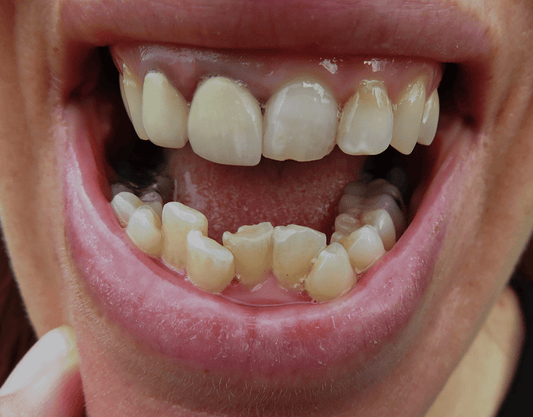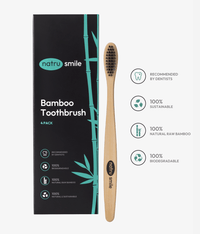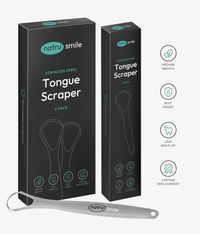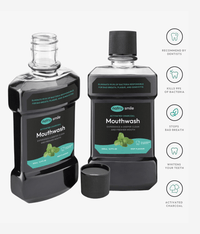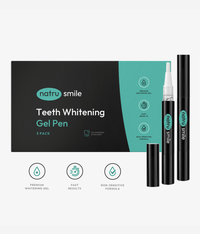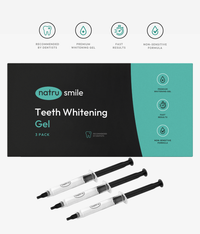
All products are certified by dental expert Dr. Greg Grillo
This article is for anyone who is considering getting veneers to improve their smile but has crooked teeth. It will provide a comprehensive guide on whether veneers are a viable option for correcting crooked teeth, the factors that can affect the procedure's success, and alternative solutions for achieving a straighter smile.
Dental veneers are one of the most popular options for improving your smile—they're less expensive than dental crowns or implants but they're more durable and permanent than bonding. Plus, they can give you a more natural-looking result.
There are plenty of reasons you'd want to consider veneers:
- Teeth whitening purposes
- Correcting misalignment, gaps, and chips in teeth
- Covering discoloration or stains
If you have crooked teeth, you may wonder how this affects your candidacy for veneers.
The short answer is: it depends. It is possible to get veneers with crooked teeth, but this often requires more preparation than usual and the success of the procedure may be affected by other factors.
In this article, we'll explore the complications and caveats of getting veneers with crooked teeth as well as the factors that can influence the success of the procedure. We'll also provide alternative solutions for achieving a straighter smile.
Can Veneers Straighten Crooked Teeth?
Veneers are an excellent cosmetic dental solution for a wide range of dental issues, including stained, chipped, and gapped teeth. But they are not a cure-all solution for correcting crooked teeth.
While veneers can improve the appearance of your teeth by making them look straighter, they cannot physically straighten crooked teeth.
Veneers Are For Cosmetic, Not Orthodontic Purposes.
Veneers are thin shells of porcelain or composite resin bonded to the front surface of a tooth to enhance its appearance.
The veneers are custom-made to fit over the existing teeth, which means they can only mask the underlying crookedness of your teeth. They do not change the position of the teeth or the bite—only professional orthodontic treatment can do that.
Veneers Have Limited Orthodontic Benefits.
Veneers can be used to address minor cases of crookedness, chips, or visible gum recession (e.g., gum veneers).
If the crookedness is mild, the dentist may be able to use veneers to make the teeth look straighter. If it is too severe, the only option for patients is to wear braces.
Location Plays A Role In Whether Veneers Will Work On Crooked Teeth.
The success of veneers for crooked teeth also depends on the location of the crooked teeth. If the crooked teeth are located in the front of the mouth (e.g., canine teeth), veneers can be a viable solution.
They are not the best option if the crooked teeth are located at the back of the mouth since they may affect the bite and cause significant discomfort or crowding in other parts of the mouth.
Fixing Crooked Teeth With Veneers: Before And After (Images)
Crooked teeth before and after, with other fixes included.
Simple fix, before and after veneers.
Who Is A Candidate For Porcelain Veneers?
Whether or not veneers are a good fit for your particular situation depends on the severity of your tooth misalignment and whether or not it can be fixed with small cosmetic alterations.
Here are some different personas that may be good candidates for porcelain veneers:
- People with stained or discolored teeth that they can’t (or don’t want to) correct with teeth whitening treatments.
- Individuals with chipped or cracked teeth that need to be repaired.
- Those with small gaps or spaces between their teeth that they would like to close.
- Individuals with misshapen or uneven teeth that they would like to improve.
- People with worn down or short teeth who would like to add length or restore their original shape.
- Those with slightly crooked or overlapping teeth that do not require significant orthodontic correction.
It's important to note that to be a suitable candidate for porcelain veneers, you should have healthy teeth and gums. If you have underlying dental issues such as gum disease, tooth decay, or a severely misaligned bite (e.g., buck teeth or underbite), these issues must be addressed before considering porcelain veneers.
You may also want to consider composite vs. porcelain veneers, as composite resin is a reversible, non-permanent option. Once you shave away a part of your teeth for porcelain veneer placement, you won’t be able to undo the process.
Your dentist will evaluate your case during your first scheduled consultation to help you determine whether or not veneers are a suitable solution for you.
Receiving Veneers With Crooked Teeth: Step-By-Step Process
Receiving veneers for crooked teeth is a multi-step process that typically involves several appointments with your dentist. Your exact procedure and experience will depend on whether you choose snap-on veneers, porcelain veneers, or both.
Here is a step-by-step process for receiving veneers for crooked teeth:
Step 1: Consultation And Examination
The first step is to schedule a consultation with your dentist to discuss your concerns and goals for your smile. Your dentist will examine your teeth, take X-rays, and determine whether veneers are viable for you. They will also discuss the different types of veneers available and help you choose the best option based on your needs.
Step 2: Preparation
After opting for veneers, your dentist will begin by preparing your teeth. This requires removing a small portion of the enamel from the front of each tooth to make space for the veneers. To minimize discomfort during this procedure, most dentists provide local anesthesia.
Step 3: Impressions
After your teeth are prepared, your dentist will take impressions of your teeth to create custom-made veneers that fit your teeth perfectly. The impressions are sent to a dental laboratory where your veneers will be handmade.
This process will take between one and two weeks.
Step 4: Temporary Veneers
While you wait for your permanent veneers, your dentist might place temporary veneers on your teeth. These provisional veneers protect your teeth and ensure you can function normally while waiting for your permanent veneers.
You might not need temporary veneers—they are usually only required if you need functional improvement in addition to cosmetic enhancement.
Step 5: Fitting
Once your permanent veneers are ready, your dentist will remove the temporary veneers and place the permanent veneers on your teeth. They will check the fit and color of the veneers to ensure that they look natural and blend in with your surrounding teeth.
Step 6: Bonding
After confirming the fit and color, your dentist will bond the veneers to your teeth using a special dental adhesive. They will then use a curing light to harden the adhesive and secure your veneers in place.
Step 7: Follow-Up
After your veneers are bonded, your dentist will schedule a follow-up appointment to ensure they are functioning correctly and that you are happy with the results. They will also provide instructions on how to care for your veneers and maintain good oral hygiene.
How Many Dental Veneers Will I Need?
The number of dental veneers you need depends on several factors, including your individual goals for your smile, the condition of your teeth, and your budget. Here are some things to consider when determining how many dental veneers you will need:
-
Which teeth do you want to enhance? If you're only interested in improving the appearance of a few teeth, such as those in the front of your mouth that are visible when you smile, you may only need a few veneers. On the other hand, if you want to improve the appearance of several teeth, you may need more.
-
What is the current condition of your teeth? If your teeth are severely discolored or damaged, you may need more veneers to achieve your desired aesthetic result. Sometimes, your dentist may recommend a combination of veneers and other cosmetic treatments, such as teeth whitening, bonding, or orthodontic appliances, to achieve the best outcome.
- What is your budget? Dental veneers can be a significant investment, and the cost of the procedure can vary depending on several factors, such as the number of veneers needed and the material used. Your dentist can provide a cost estimate based on your needs and help you determine the best approach based on your budget.
In general, most people who receive dental veneers typically get between 6-10 veneers. However, the exact number of veneers you need will depend on your unique circumstances.
Want to learn more? These are the questions our customers ask us the most.
Can You Fix A Crooked Smile With Veneers?
You cannot "fix" a crooked smile with veneers per se. If there are small functional or aesthetic problems with the way your teeth fit together, veneers may be able to improve them. But if you have severely crooked teeth or a misaligned bite, braces or other orthodontic treatments are the onl corrective options.
Are Veneers Better Than Braces For Crooked Teeth?
Veneers are in no way better than braces for crooked teeth. However, braces are clunky and require months (or years) of treatment, while veneers can provide an immediate, aesthetic improvement with little to no downtime. If your main concern is improving the appearance of crooked teeth and your condition is mild enough to be corrected with veneers, then they might be a better and less costly option than braces.
When Should You Not Get Veneers For Crooked Teeth?
In most cases, veneers are not a good option for correcting crooked teeth. Braces and Invisalign are the best treatment options if your condition is severe enough to cause functional problems with how your teeth fit together. The only time veneers are recommended for crooked teeth is when the misalignment is mild and your dentist can fix it with small changes to your tooth enamel structure and shape.
How Can I Hide My Crooked Teeth?
If your crooked teeth are in the front of your mouth, they will probably be visible when you smile. In these cases, you probably won't be able to hide them. You can, however, take corrective measures to improve the appearance of your smile, such as getting braces or veneers. In most cases, these are the only potential options for achieving a straighter smile.

